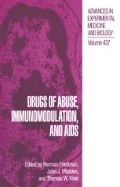Abstract
Isobutyl nitrite is representative of a group of inhalants abused primarily by male homosexuals and adolescents. These inhalants are vasodilators and relax smooth muscles, similar to the effects of exposure to nitric oxide (NO). Epidemiological studies have identified heavy nitrite abuse as an independent risk factor for seropositivity for human immunodeficiency virus (1,2) and for Kaposi’s sarcoma in AIDS patients (3,4). A co-factor role of nitrite inhalants might be through immunosuppression. We have developed a mouse model of nitrite inhalation, in which groups of mice are exposed to isobutyl nitrite in an inhalation chamber for 45 min/day for 14 days. One day after the last exposure, the mice have severely depressed cell-mediated immunity (5,6) and T-dependent antibody induction (7). It has been hypothesized (8) that the inhalants produced their immunotoxicity by liberating nitric oxide (NO). In the present study, we showed that isobutyl nitrite liberated NO, but that the liberated NO did not cause the immunosuppression associated with isobutyl nitrite.
Access this chapter
Tax calculation will be finalised at checkout
Purchases are for personal use only
Preview
Unable to display preview. Download preview PDF.
References
Moss, A. R., D. Osmond, P. Bacchetti, J.-C. Chermann, F. Barre-Sinoussi, and J. Carlson. 1987. Risk factors for AIDS and HIV seropositivity in homosexual men. Amer. J. Epidem. 125:1035–1047.
Seage, G. R., III, K. H. Mayer, C. R. Horsburgh, Jr., S. D. Holmberg, M. W. Moon, and G. A. Lamb. 1992. The relation between nitrite inhalants, unprotected receptive anal intercourse, and the risk of human immunodeficiency virus infection. Amer. J. Epidem. 135:1–11.
Marmor, M., A. E. Friedman-Kien, L. Laubenstein, R. D. Byrum, D. C. William, S. D’onofrio, and N. Dubin. 1982. Risk factors for Kaposi’s sarcoma in homosexual men. Lancet 8281:1083–1086.
Haverkos, H. W., P. F. Pinsky, D. P. Drotman, and D. J. Bregman. 1985. Disease manifestation among homosexual men with acquired immunodeficiency syndrome: A possible role of nitrites in Kaposi’s sarcoma. Sex. Trans. Dis. 12:203–208.
Soderberg, L. S. F. 1994. T cell functions are impaired by inhaled isobutyl nitrite through a T-independent mechanism. Toxicol. Lett. 70:319–329.
Soderberg, L. S. F. and J. B. Barnett. 1995. Inhalation exposure to isobutyl nitrite inhibits macrophage tumoricidal activity and modulates inducible nitric oxide. J. Leukocyte Biol. 57:135–140.
Soderberg, L. S. F. and J. B. Barnett. 1993. Inhaled isobutyl nitrite compromises T-dependent, but not T-independent antibody induction. Int. J. Immunopharmacol. 15:821–827.
Morgan, M. J., A. S. Kimes, and E. D. London. 1992. Possible roles for nitric oxide in AIDS and associated pathology. Med. Hypotheses 38:189–193.
Soderberg, L. S. F., J. T. Flick, and J. B. Barnett. 1996. Acute inhalation exposure to isobutyl nitrite causes nonspecific blood cell destruction. Exp. Hematol. 24:592–596.
Soderberg, L. S. F. and J. B. Barnett. 1991. Exposure to inhaled isobutyl nitrite reduces T cell blastogenesis and antibody responsiveness. Fund. Appl. Toxicol. 17:821–824.
Albina, J.E., Cui, S., Mateo, R.B., and Reichner, J.S. 1993. Nitric oxide-mediated apoptosis in murine peritoneal macrophages. J. Immunol. 150:5080–5085.
Fecho, K., Maslonek, K.A., Coussons-Read, M.E., Dykstra, L.A., and Lysle, D.T. 1994. Macrophage-derived nitric oxide is involved in the depressed concanavalin A responsiveness of splenic lymphocytes from rats administered morphine in vivo. J. Immunol. 152:5845–5852.
Stamler, J.S. 1994. Redox signaling: Nitrosylation and related target interactions of nitric oxide. Cell 78:931–936.
Uppu, R.M. and Pryor, W.A. 1996. Synthesis of peroxynitrite in a two-phase system using isoamyl nitrite and hydrogen peroxide. Anal. Biochem. 236(2):242–249.
Author information
Authors and Affiliations
Editor information
Editors and Affiliations
Rights and permissions
Copyright information
© 1998 Springer Science+Business Media New York
About this chapter
Cite this chapter
Soderberg, L.S.F., Roy, A., Barnett, J.B. (1998). Isobutyl Nitrite Liberates Nitric Oxide Which is not Responsible for the Immunotoxicity of the Inhalant. In: Friedman, H., Madden, J.J., Klein, T.W. (eds) Drugs of Abuse, Immunomodulation, and Aids. Advances in Experimental Medicine and Biology, vol 437. Springer, Boston, MA. https://doi.org/10.1007/978-1-4615-5347-2_29
Download citation
DOI: https://doi.org/10.1007/978-1-4615-5347-2_29
Publisher Name: Springer, Boston, MA
Print ISBN: 978-1-4613-7439-8
Online ISBN: 978-1-4615-5347-2
eBook Packages: Springer Book Archive

